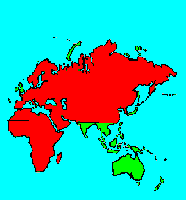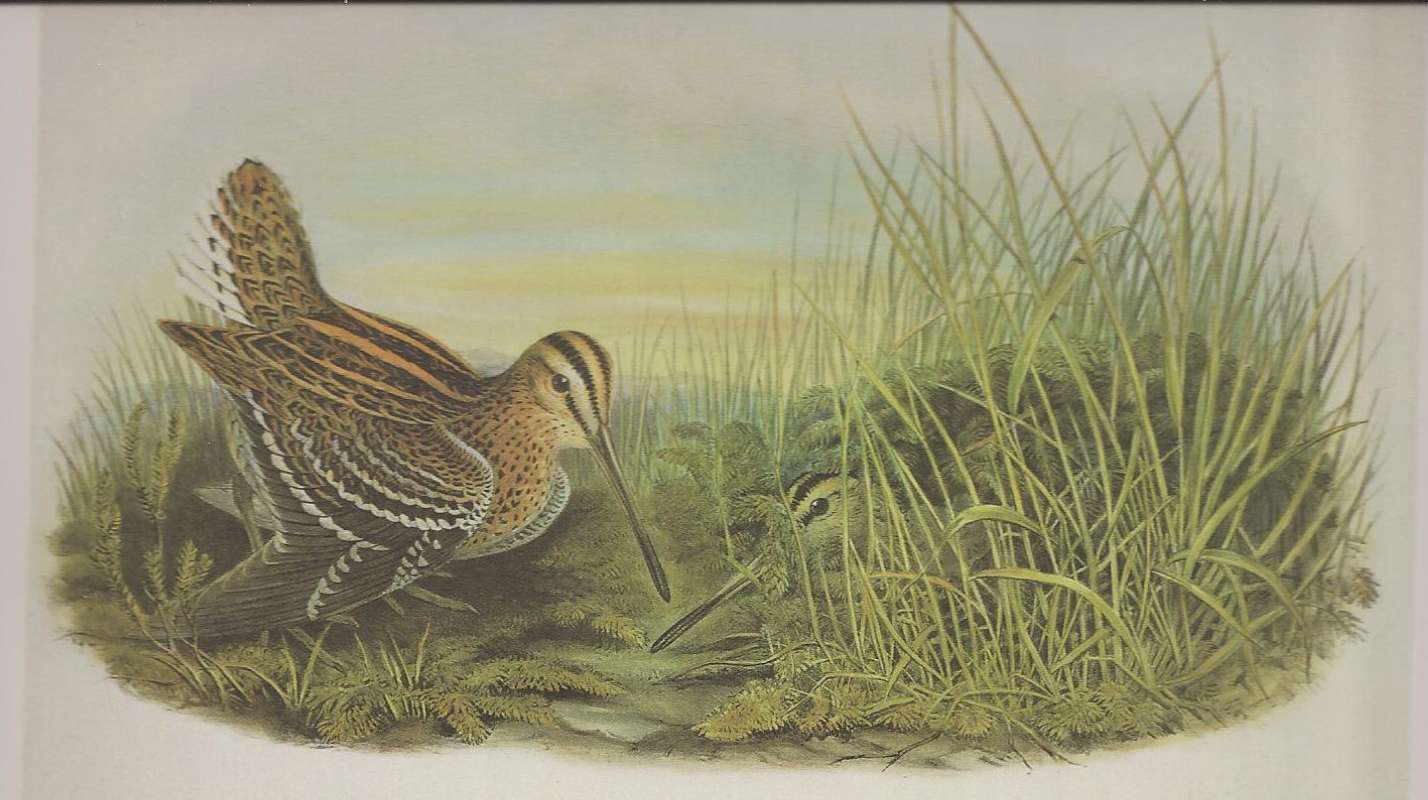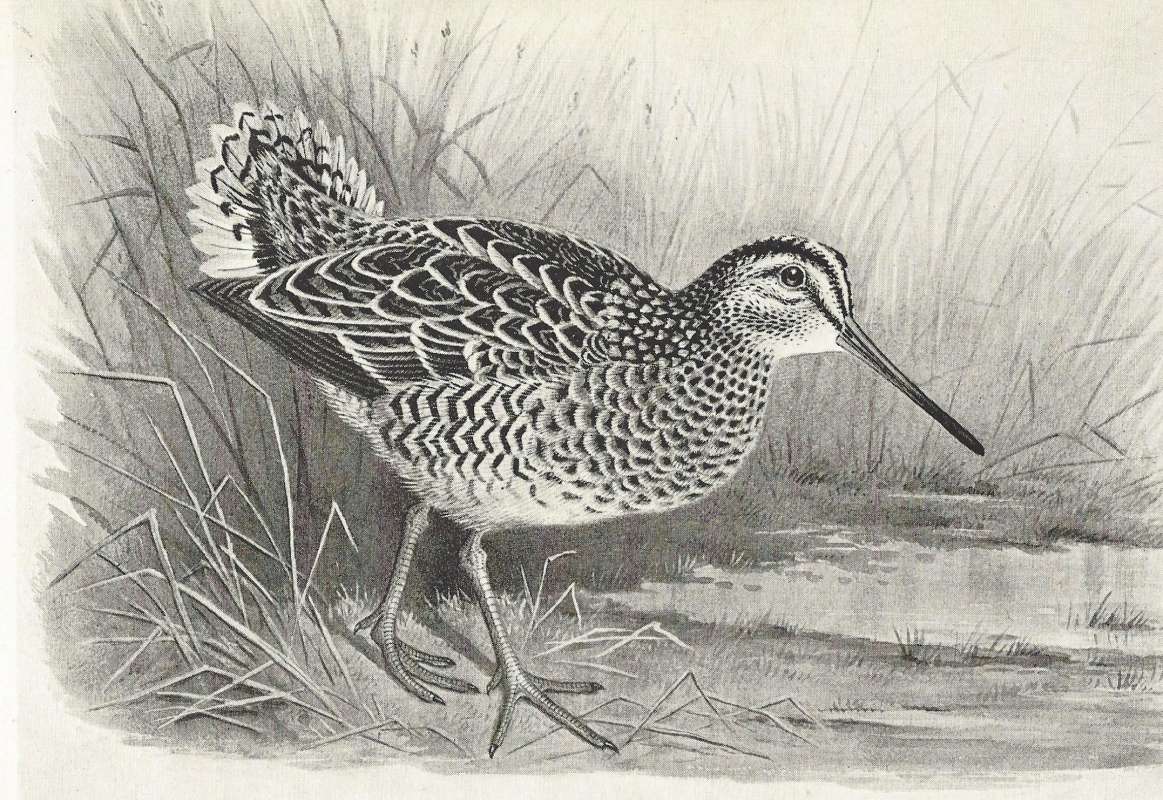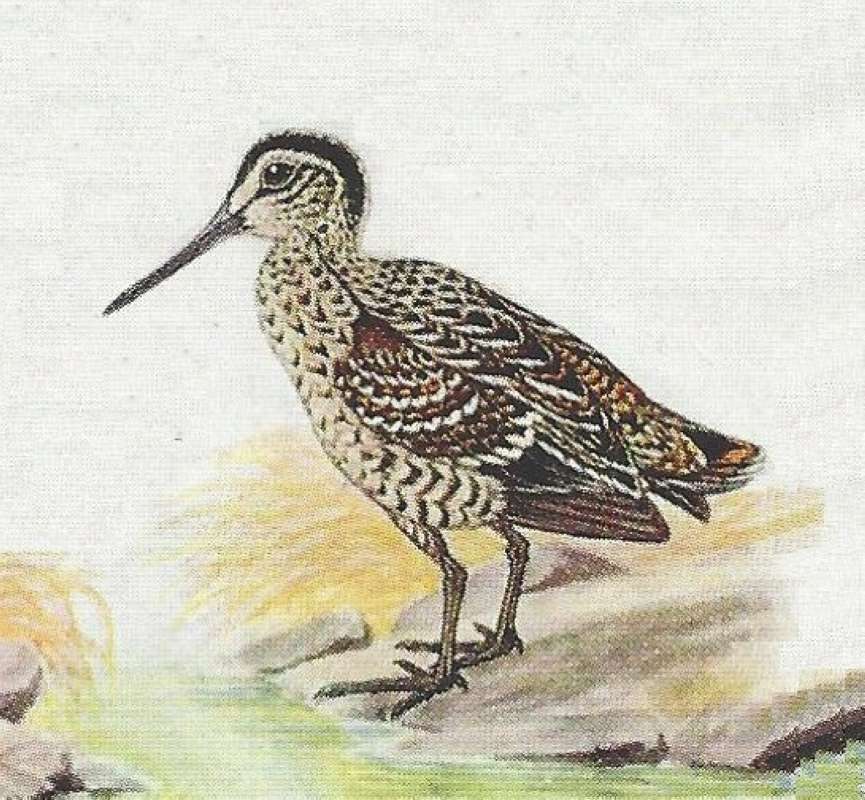SPECIES INFO
Great snipe (Capella media to Gallinago media) is found from Europe to Siberia and migrating to moist Africa and Iran. This species is similar to the common snipe. However, the common snipe has 14 tail feathers, and this species has 16 tail feathers. This 11 inch bird can be recognized by its long black tipped bill. The breast is pale, but marked with black stripes on the edges. (The similar woodcock, Scolpax rusticola, has brown stripes that cross the entire breast.) The wings are brown, but marked with white.
There are no subspecies.The snipe subfamily (Gallinagininae) is found almost worldwide. This subfamily contains the following genera:
Coenocorypha (2 species)
Lymnocryptes (1 species)
Gallinago (16 species)
Limnodromus (3 species)
(The genus Capella was previously used here, but that genus is no longer used.)
Sandpipers (Family Scolopacidae) are a group of 82 species of wading and shore birds. Many species in this group run along sandy shores in search of food.
To facilitate study of this family, we will divide it into subfamilies as follows:
Scolopacinae - Woodcocks:
Gallinagininae - Snipes:
Tringinae - Godwits:
Arenariinae - Turnstones:
Galidridinae - Knots, Sandpipers, Stints :
Phalaropodinae - Phalaropes
Shorebirds (Order Charadriformes) are a group of 305 species of worldwide birds. While good fliers, they are much observed feeding along seashores and in the vicinity of inland bodies of water. Seagulls and sandpipers are typical representatives of this order.
There are many different families herein, and most authors end up with about 18 different families. Other groups included herein include the plovers, curlews, coursers, oyster catchers, jacanas, terns, phalaropes, plovers, stilts and avocets, skimmers, snipes, jaegers, and auks and puffins.
Aves contains about 8,650 different species of living birds known to science. Each year about one new species is discovered in some remote rain forest or remote island. In addition, scientists have been raising many subspecies to full species status which may raise the species count to 10,000. Birdlife recognizes 10,027 species as of 2011.
However, each year about one species goes extinct. The rate of extinction is increasing, and the rate of new discovery is decreasing, so that the number of bird species will soon begin to decline rapidly. Although different taxonomists would organize the birds differently, there are approximately twenty-seven orders of birds. These orders are broken down into about one hundred and fifty-five different families.
Recent research of the genetic structure of some of the shore birds and owls would indicate that the present organization of orders and families should have some modification.
The birds are a worldwide group of animals that are characterized by having the front limbs modified into wings that are used for flying. Perhaps the most unique feature of the birds is the feathers. These feathers are made up of a central support called a quill and a series of small filaments that are hooked together as barbs.
For many years it was believed that Archaeopteryx discovered in Bavaria was the oldest bird from about 150 million years ago. However, in l986, Sankar Chattterjee, a Texas paleontologist, reportedly discovered a bird in the genus Protoavis that lived about 225 million years ago.
When this project was begun in 1978, we used Austin & Singer for bird taxonomy. Since then, we have adopted many changes, but have kept some older concepts that are still found widely in the literature. Recently, we have used Clements and Howard & Moore. Very recently, we have used Monroe and Sibley for the higher taxonomy of the perching birds.
Backboned Animals (Phylum Chordata) are the most advanced group of animals on earth. These animals are characterized by having a spinal cord or backbone. Most members have a clearly defined brain that controls the organism through a spinal cord. Fish, amphibians, reptiles, birds, and mammals are in this phylum.
Currently, some taxonomists believe that the fish should be divided into two groups (sharks and regular fishes) and that there are some other primitive groups in the phylum such as hagfish or lampreys.
Animal Kingdom contains numerous organisms that feed on other animals or plants. Included in the animal kingdom are the lower marine invertebrates such as sponges and corals, the jointed legged animals such as insects and spiders, and the backboned animals such as fish, amphibians, reptiles, birds, and mammals.




